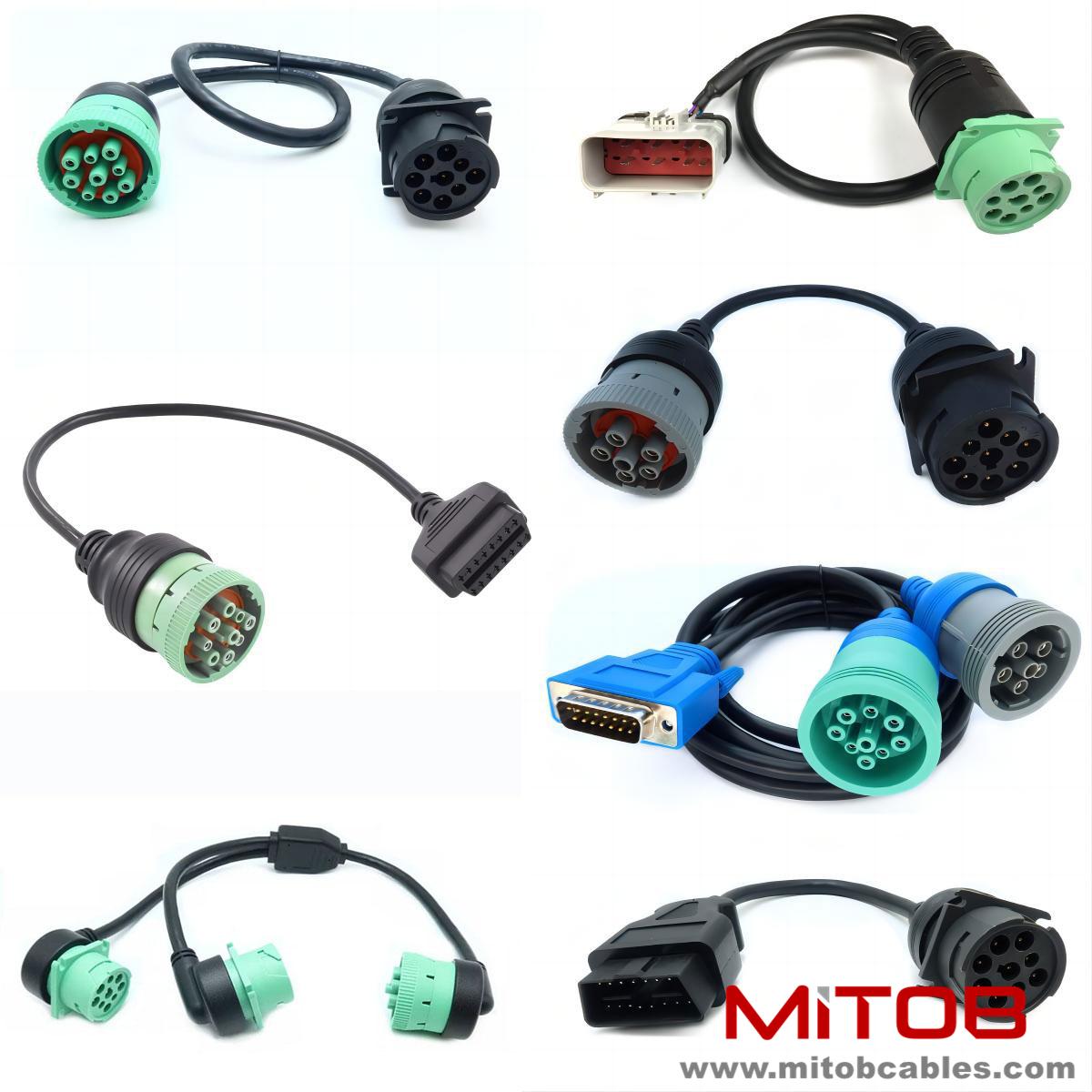Daily protection precautions for RP1226 to J1939 cables
The daily protection of RP1226 to J1939 cables should pay attention to the following aspects:
Avoid physical damage
In daily use: prevent cable compression and collision during vehicle or equipment operation. For cables exposed to the outside, protective devices should be installed, such as adding protective covers, guardrails, etc. Avoid placing heavy objects on the cable to prevent deformation or damage to the internal structure caused by the compression of heavy objects.

Prevent electrical faults
Avoid overload: Use the cable strictly according to its rated current and voltage, and do not operate it under overload. Regularly check whether there is any heating phenomenon at the cable connection part. If abnormal temperature rise is found, it may be caused by current overload or poor contact. The cause should be promptly investigated and dealt with.
Preventing short circuits: Ensure that the insulation performance of the cable is good, and regularly check whether the insulation skin is damaged, aged, cracked, or not. If insulation damage is found, it should be repaired or the cable should be replaced in a timely manner. At the same time, it is necessary to avoid direct contact between cables and other conductive objects to prevent short circuit faults. When conducting electrical equipment maintenance or repair, protective measures should be taken to prevent tools or components from accidentally touching cables and causing short circuits.
Control environmental factors
Temperature control: Avoid prolonged exposure of cables to high temperatures, such as near engines, heating equipment, and other heat sources. If unavoidable, insulation measures should be taken, such as wrapping the cable with insulation materials. At the same time, attention should also be paid to the performance changes of cables in low-temperature environments. Low temperatures may cause cables to become hard and brittle, and are prone to breakage. If necessary, insulation measures can be taken.
Humidity protection: To prevent cables from getting damp, waterproof sealing treatment should be done for parts that may come into contact with water, such as vehicle chassis, humid industrial environments, etc. Waterproof tape, sealant, etc. can be used to seal cable joints and weak areas. Regularly check whether there is water accumulation in cable trenches, cable trays, and other areas. If there is water accumulation, it should be promptly removed to avoid long-term immersion of cables in water.
Corrosion prevention: In environments with corrosive gases or liquids, cables with corrosion resistance should be selected, or special anti-corrosion treatment should be applied to the cables, such as coating with anti-corrosion coatings. Regularly clean the dust, oil stains, and corrosive substances on the surface of the cable to maintain its cleanliness.
Regular inspection and maintenance
Appearance inspection: Regularly inspect the appearance of the cable to see if there are any signs of damage, deformation, discoloration, aging, etc., especially paying attention to the joint parts of the cable for looseness, oxidation, overheating, etc. If any problems are found, they should be dealt with in a timely manner. Minor damages can be repaired, while serious damages require replacement of cables or connectors.
Performance testing: Regularly test the electrical performance of cables, such as insulation resistance, conductivity, etc. Professional testing equipment such as insulation resistance testers and multimeters can be used. By detecting potential problems inside the cable in a timely manner, such as decreased insulation performance, wire breakage, etc., corresponding measures can be taken for repair or replacement.
Contact: Kevin
Phone: 0086-18823374992
E-mail: kevin@mitobcable.com
Whatsapp:
Add: Bld B2, Floor7 , Xinghe Zhongkai AI Industrial Park, Zhongkai High-tech Zone, Huizhou,China